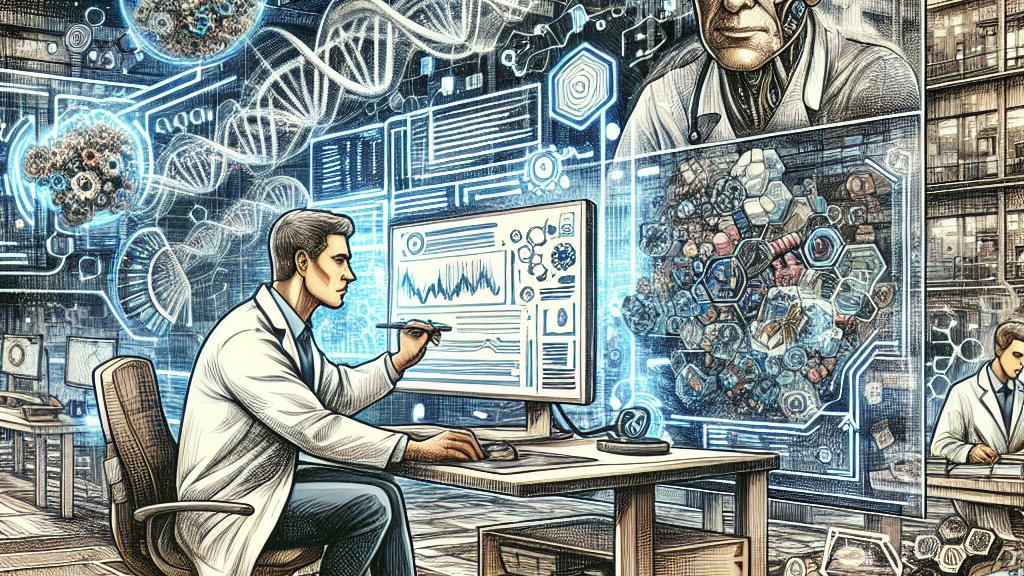Young Innovators Using Technology to Make Science Easier
Overview
- AI redefines scientific exploration, making complex research manageable.
- Diversity in genomic studies leads to richer, more applicable findings.
- Humanoid robots promise to boost efficiency and dramatically enhance workplace safety.

AI in Bioinformatics
Nestled in the heart of San Francisco, California, David Kelley, a pioneering bioinformatics scientist at Calico Life Sciences, is revolutionizing the way we understand gene regulation. Utilizing artificial intelligence, Kelley transforms complicated genetic data into discoveries that can reshape our approach to age-related diseases. Picture advanced algorithms that not only analyze vast amounts of information but also predict gene behavior with remarkable accuracy—this is the power of AI in action! Kelley argues passionately that AI does not replace the role of scientists; rather, it enhances their capabilities, enabling them to tackle questions that previously seemed out of reach.
Diversity in Genomics Data
Yet, in the midst of these promising advancements, Kelley raises a critical issue that deserves our attention: the glaring lack of diversity in genomic research. Many studies rely heavily on data predominantly sourced from white populations, which limits the applicability of their findings to broader populations. This is a significant concern because genetic variations can differ markedly across ethnic groups. For instance, a breakthrough in a treatment that works for one population might not be effective for another. To truly unlock the potential of genomics, Kelley advocates for a more inclusive approach—profiling genetic data from diverse populations, ensuring that everyone reaps the benefits of scientific progress.
Robotics and Lifesaving Innovations
Meanwhile, across the globe in Sapporo, Japan, Lauren Takahashi stands at the forefront of innovation, blending her expertise in chemical engineering with cutting-edge artificial intelligence. Her journey from linguistics to engineering is not just fascinating; it's proof that diverse experiences can lead to groundbreaking ideas. Takahashi is pioneering AI systems that optimize industrial processes while emphasizing worker safety. Imagine automated systems that can handle dangerous tasks, reducing workplace accidents significantly! By enabling machines to take on hazardous roles, her work demonstrates how technology can directly improve the lives of workers and create safer environments.
The Future of Work with Humanoid Robots
Moreover, the field of robotics takes a giant leap forward with innovations from Figure, a revolutionary company creating humanoid robots designed to collaborate with humans in various sectors. These robots are not mere machines; they possess the dexterity to perform complex tasks like lifting heavy boxes, assembling products, or navigating busy spaces—skills that are essential in today’s fast-paced work environments. Given the current labor shortages, envision a setting where humanoid robots effectively complement human workers, relieving them of monotonous or physically demanding tasks. This futuristic scenario could redefine job roles, allowing human workers to pursue creative and strategic endeavors.
AI Companions for Kids
Finally, let’s not overlook the impact of the Miko AI-powered robot, designed with children in mind. This delightful companion stands out as an educational tool, fusing fun with learning by engaging kids in interactive games that boost critical thinking and creativity. Just picture a child learning about the solar system as Miko guides them through a cosmic adventure, making education exciting and accessible. Moreover, Miko ensures safety and privacy, providing parents with peace of mind while their children explore the fascinating world of knowledge. By revolutionizing the learning experience, Miko exemplifies how artificial intelligence can not only assist in education but can truly ignite a passion for learning in young minds.

Loading...